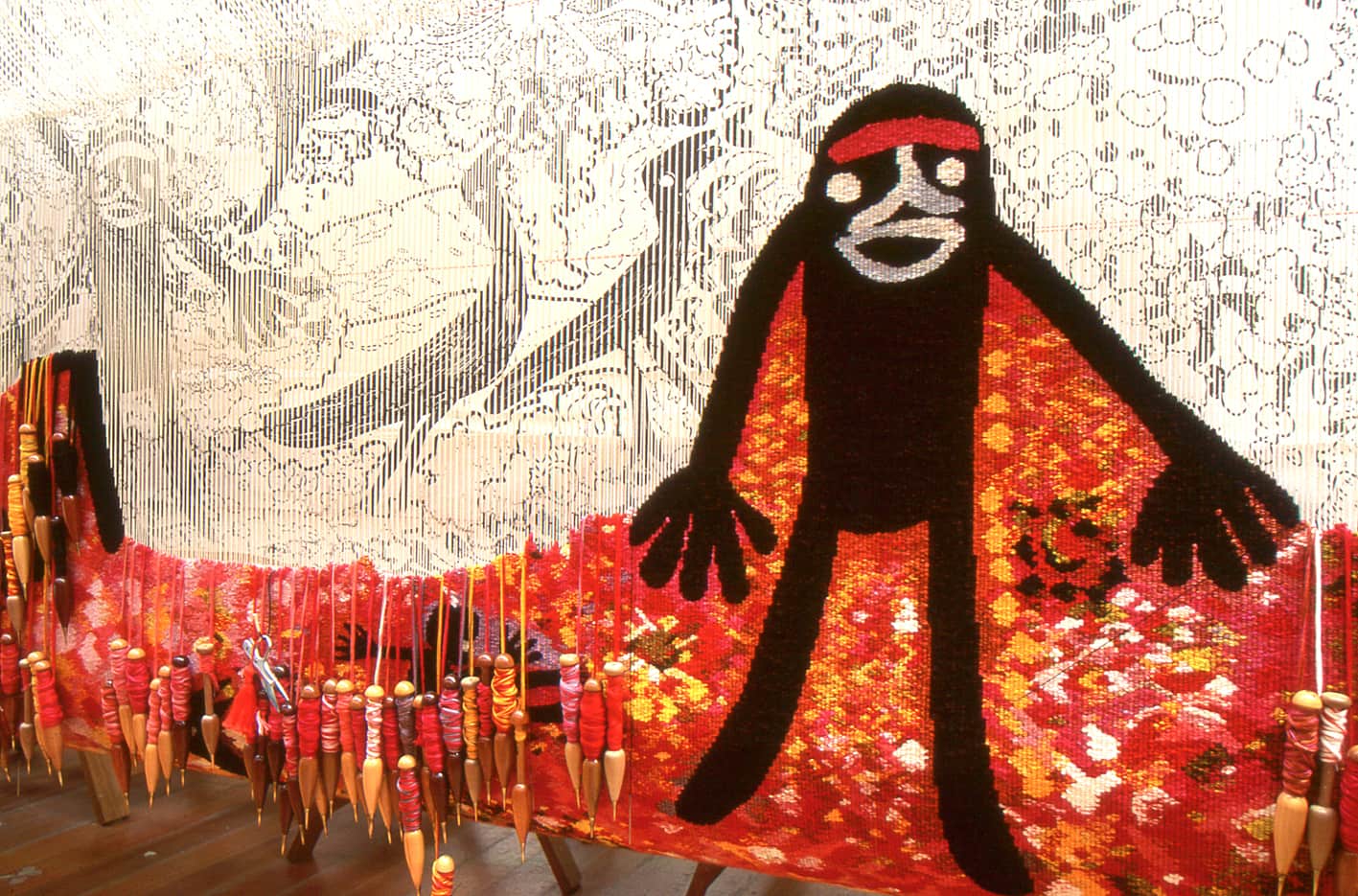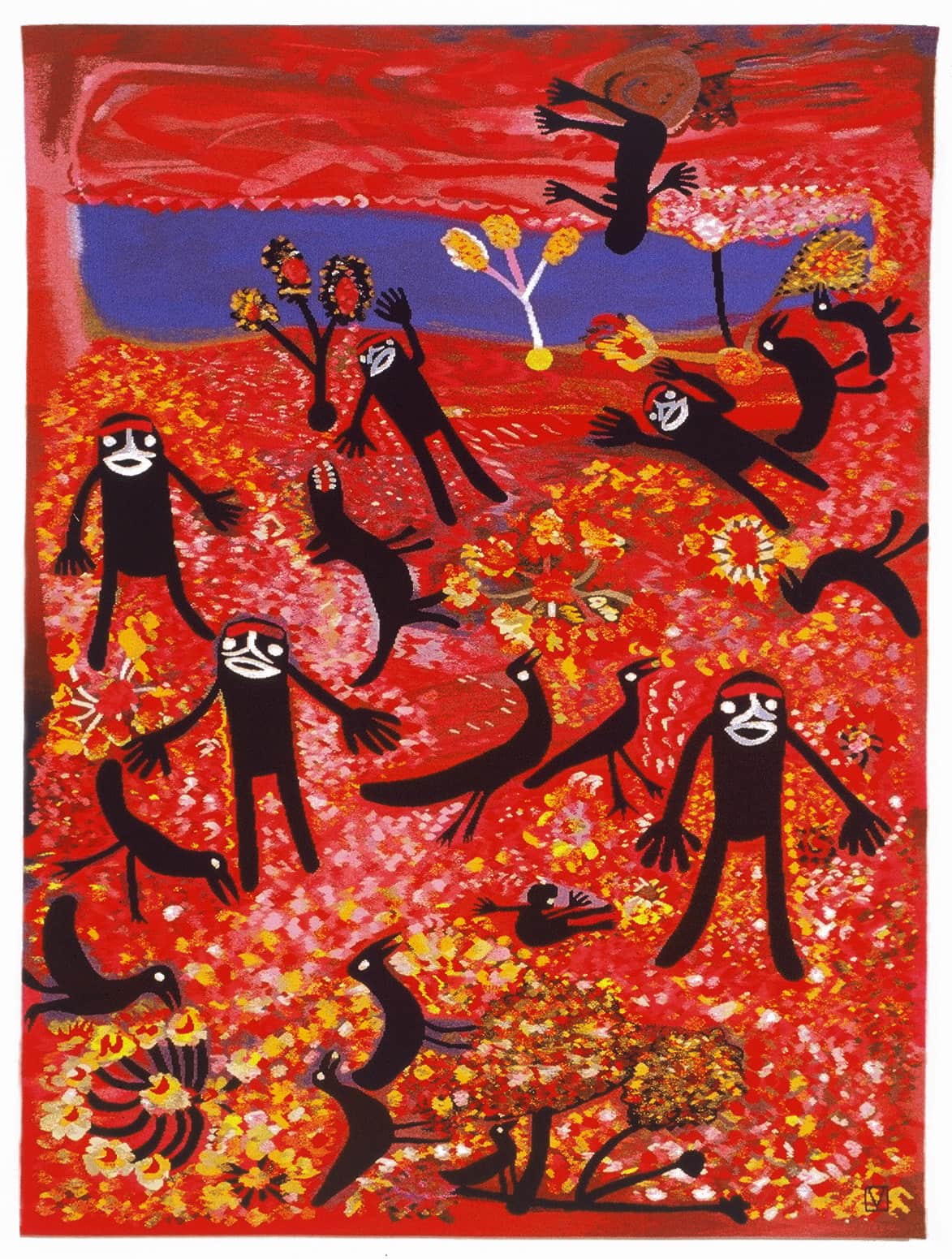

Panjiti Mary McLean, an elder of the Ngaatjajarra Aboriginal community from the Western Desert region in Central Australia, designed Painting at Kalkutjara, which was translated into tapestry by the ATW in 1998.
McLean’s paintings represent quotidian aspects of her community life, topographic features of the landscape, as well as the flora and fauna native to Ngaatjajarra, for example, bush foods like the quandong fruit. She works in a figurative tradition, her canvases replete with densely packed imagery teeming with life. McLean’s paintings often feature masses of tiny figures which seem to populate a fecund landscape, often intertwined with animal tracks or fields of flowers.
In Painting at Kaltukatjara, five figures with out-stretched arms are interspersed over a red ground, strewn with white and yellow flowers. ATW Weaver Irene Creedon was keen to capture the expressiveness of the ground in the image – the striking red of the earth contrasting with the dazzle of wildflowers – and used a strong palette to achieve this. The finished tapestry has a buoyant sense of vitality and, in its mesmerising harmony between humanity and nature, represents a condition of perfection, an idyll.
Panjiti Mary McLean’s work has been collected by all major Australian institutions.